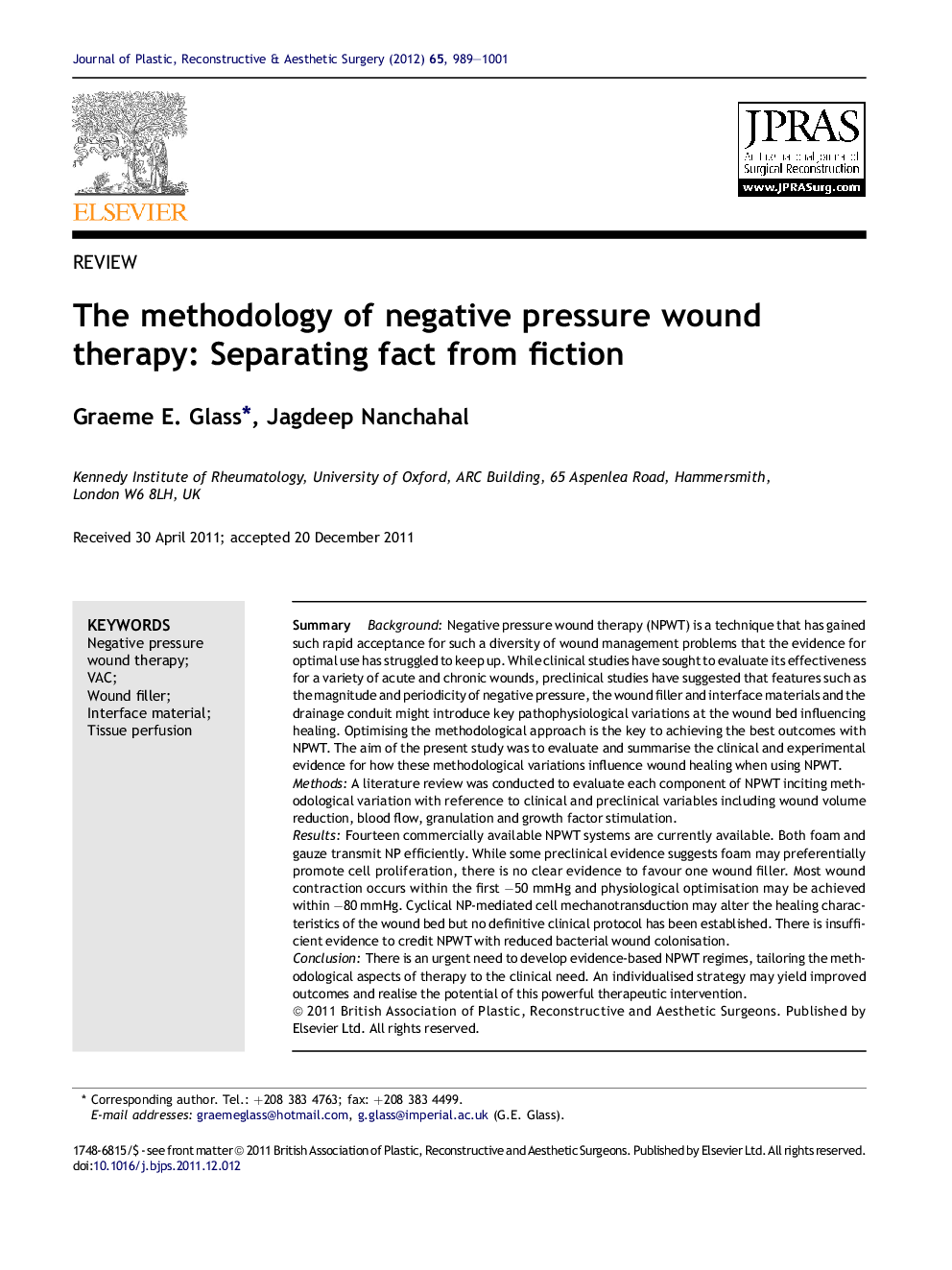| Article ID | Journal | Published Year | Pages | File Type |
|---|---|---|---|---|
| 4119467 | Journal of Plastic, Reconstructive & Aesthetic Surgery | 2012 | 13 Pages |
SummaryBackgroundNegative pressure wound therapy (NPWT) is a technique that has gained such rapid acceptance for such a diversity of wound management problems that the evidence for optimal use has struggled to keep up. While clinical studies have sought to evaluate its effectiveness for a variety of acute and chronic wounds, preclinical studies have suggested that features such as the magnitude and periodicity of negative pressure, the wound filler and interface materials and the drainage conduit might introduce key pathophysiological variations at the wound bed influencing healing. Optimising the methodological approach is the key to achieving the best outcomes with NPWT. The aim of the present study was to evaluate and summarise the clinical and experimental evidence for how these methodological variations influence wound healing when using NPWT.MethodsA literature review was conducted to evaluate each component of NPWT inciting methodological variation with reference to clinical and preclinical variables including wound volume reduction, blood flow, granulation and growth factor stimulation.ResultsFourteen commercially available NPWT systems are currently available. Both foam and gauze transmit NP efficiently. While some preclinical evidence suggests foam may preferentially promote cell proliferation, there is no clear evidence to favour one wound filler. Most wound contraction occurs within the first −50 mmHg and physiological optimisation may be achieved within −80 mmHg. Cyclical NP-mediated cell mechanotransduction may alter the healing characteristics of the wound bed but no definitive clinical protocol has been established. There is insufficient evidence to credit NPWT with reduced bacterial wound colonisation.ConclusionThere is an urgent need to develop evidence-based NPWT regimes, tailoring the methodological aspects of therapy to the clinical need. An individualised strategy may yield improved outcomes and realise the potential of this powerful therapeutic intervention.
